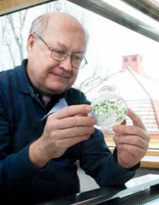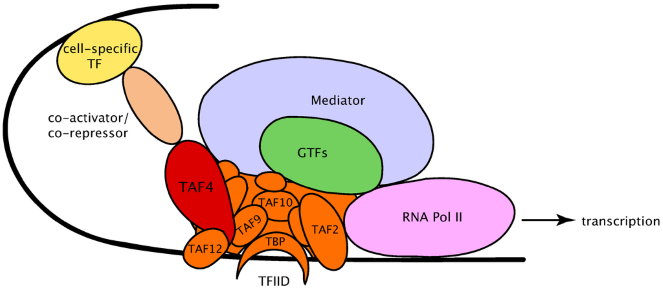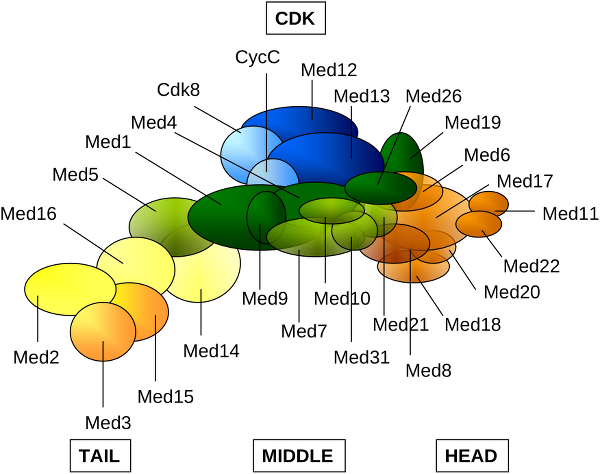Contact
 Professor Hans Ronne
Professor Hans Ronne
Department of Forest Mycology and Plant Pathology
018-673223, hans.ronne@slu.se
Mediator is a large complex of more than 20 proteins (subunits) that regulates RNA polymerase II, the enzyme that transcribes (expresses) genes encoding proteins.
Mediator was discovered by experiments in yeast, but is present in all eukaryotes [1,2]. The subunits of Mediator now have a common terminology in different organisms, where the proteins are numbered from Med1 to Med37 [3]. Most of the subunits are conserved in all eukaryotes, but some are present only in plants and others only in animals and fungi.

RNA polymerase II on a promoter. From Kazantseva J & Palm K (2014) Int J Mol Sci15, 16680-97
The Mediator subunits are organized in four modules: Head, Middle, Tail and Cyclin-Dependent Kinase (CDK). The Head module binds to the RNA polymerase and regulates its function. The Tail module interacts with DNA-binding proteins - activators and repressors - that bind to the gene's promoter, and transmits their signals to the Head module and on to the polymerase. The Kinase module is more loosely associated with the rest of Mediator, and inhibts its function. The Middle module acts as a scaffold that interacts with the other modules.

Mediator modules and subunits. From Tóth-Petróczy Á et al. (2008) PLoS Comput Biol 4, e1000243
Mediator is thought to function as a central switchboard in gene regulation, where signals from different signaling pathways are integrated before the polymerase is told to leave the promoter and begin to transcribe the gene. The details of Mediator function are however still unknown.
We have previously studied the role of Mediator in yeast and the moss Physcomitrella, using the advanced molecular genetics methods available in these two organisms [4-8]. Since 2016 we participate in a project funded by the Knut och Alice Wallenberg Foundation in which five research groups at SLU and Umeå University study the Mediator in plants and fungi, with a focus on its roll in stress signaling and stress resistance.
The project builds on comparative studies in four model organisms: cress (Arabidopsis thaliana), the moss Physcomitrella patens, yeast (Saccharomyces cerevisiae) och the mould Neurospora crassa. Our work is focused on yeast and Physcomitrella.
Questions that we will address include what genes are regulated by biotic and abiotic stress, what roles different Mediator subunits play in this regulation, how the binding of Mediator to different genes is affected by stress, and what changes occur in the chromatin structure during stress, and how thay are affected by mutations in Mediator.
Funded by the Knut and Alice Wallenberg Foundation
 Professor Hans Ronne
Professor Hans RonneDepartment of Forest Mycology and Plant Pathology
018-673223, hans.ronne@slu.se